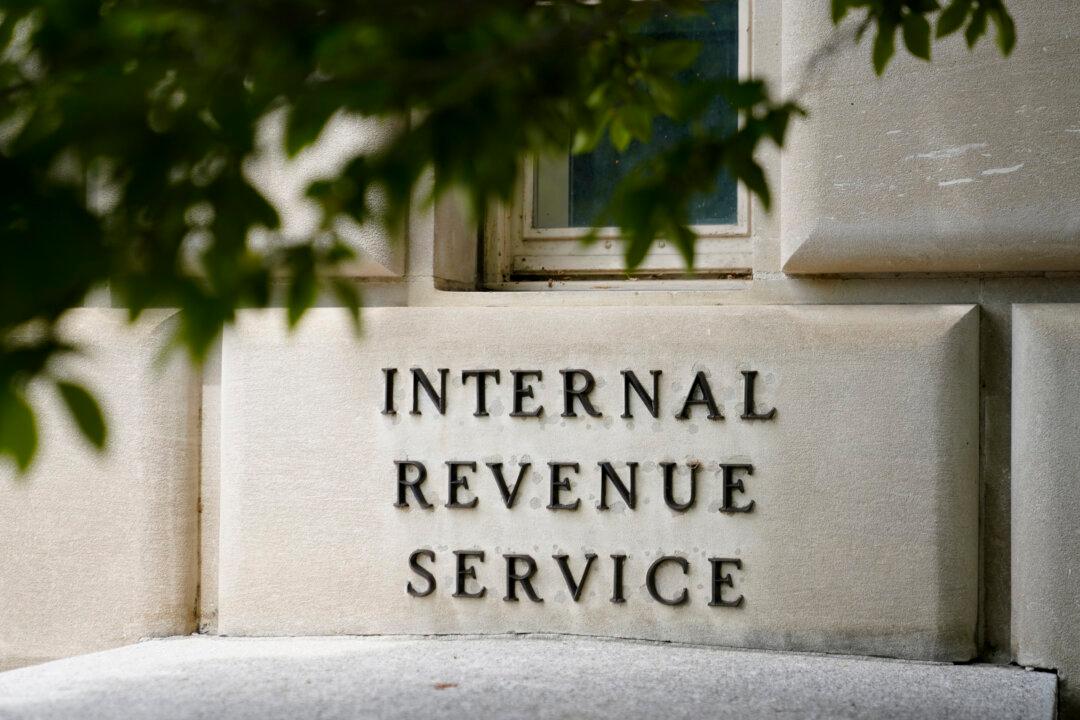A failure to properly fund the Internal Revenue Service (IRS) could result in lower and middle-income taxpayers facing a higher share of tax audits, warned the agency in a recent report.
On May 2, the IRS released an update of its Strategic Operating Plan which outlines the dozens of improvements the agency made for taxpayers with the $80 billion funding secured from the Inflation Reduction Act (IRA). According to the report, the IRS is using the funding to boost enforcement personnel like accountants, engineers, economists, data scientists, attorneys, and tax experts with specialized skills.
The new staff is expected to allow the IRS to “double audit rates on the wealthiest taxpayers, reversing the sharp decline in audit rates over the 2010s.”
However, the IRS seeks more funds to accommodate its growing personnel over the coming years. Without additional funds, “the IRS will be forced to reduce its Enforcement staff by more than 50 percent in fiscal year 2030, severely hampering our ability to perform complex audits.” A lack of funding could end up increasing the scrutiny on low-income filers, the IRS stated.
“Since lower-income taxpayers are more likely to have simple tax returns, this lack of funding will likely translate into a higher share of audits falling on low- and middle-income taxpayers, while examination coverage rates for high-income and large corporate taxpayers will severely decline.”
- Almost triple the audit rates for large corporations with assets worth over $250 million, from 8.8 percent in tax year 2019 to 22.6 percent in 2026.
- For large, complex partnerships with assets worth more than $10 million, the IRS plans to raise audit rates nearly ten-fold, from 0.1 percent in 2019 to 1 percent in 2026.
- Individual taxpayers with a total positive income of over $10 million will see audit rates jump by over 50 percent, increasing from 11 percent to 16.5 percent during the period.
This is due to the fact that the IRS uses income thresholds that are outdated and the agency has no way to identify Americans who meet the $400,000 threshold, the TIGTA stated.
While the IRS was initially granted $79.4 billion in IRA funding, $1.4 billion was rescinded through The Fiscal Responsibility Act of 2023. An additional $20.2 billion was rescinded via the Consolidated Appropriations Act of 2024.
According to initial estimates, the IRS set aside a bulk of the IRA funding for enforcement, at $44.2 billion. Taxpayer services, on the other hand, were only allocated $3.2 billion.
Out of the 82,990 full-time staff working at IRS in 2023, 40 percent were engaged in enforcement activities.
An April 2024 TIGTA report revealed that the IRS was on track to hire 5,582 tax enforcers this year in three categories—special agents, revenue officers, and revenue agents.
IRS Funding
Back in February, a report by the U.S. Treasury Department and the IRS estimated that granting sustained funding to the tax agency could ensure the IRS nets an additional $851 billion over 10 years—$461 billion more than the previous estimate of $390 billion. IRA funding is set to expire by 2031.In a Feb. 26 press release, the Treasury Department said that a “$20 billion rescission would reduce revenues by over $100 billion … The rescissions would cause IRA enforcement funding to run out in 2029—about two years earlier than it would have under the IRA as enacted—reducing the revenue raised in 2029 and subsequent years.”
According to the IRS, the agency’s taxpayer services saw several key improvements in the first year of IRS funding.
“This filing season, we have answered more than one million phone calls than last year, while increasing our level of service (the percentage of callers that speak to a Customer Service Representative) and reducing the average call wait time from 28 minutes in 2022 to an average of three minutes this year.”
In 2024, the agency added extended hours at 242 Taxpayer Assistance Centers (TACs). In addition, the IRS offered taxpayer assistance on Saturdays at over 70 locations. In total, TACs served over 780,000 taxpayers in person, 37 percent more than last year.
As part of boosting enforcement activities, the IRS recovered $520 million from high-income, high-wealth individuals who did not file taxes or failed to pay their rightful tax dues.
IRS Commissioner Danny Werfel highlighted the funding challenges faced by the agency. “It’s critical that the IRS has stable, secure funding to allow technology modernization and taxpayer service improvements to continue into the future,” he said.
The Biden administration’s 2025 budget plan has proposed extending IRA funding through fiscal year 2034, which will provide the IRS with $104 billion over a 10-year period.
“This funding will ensure the IRS can continue its transformation efforts that we have outlined in the updated Strategic Operating Plan,” he said.
“Of the $80 billion provided to the IRS in the partisan IRA, more than half, or about $46 billion, is directed toward enforcement activities, while only 4 percent of the $80 billion … was earmarked for improving taxpayer services,” he noted.
The IRS’s Strategic Operating Plan also involves addressing “racial disparities” in the agency’s enforcement activities. It cited research claiming that Black taxpayers were three to five times more likely to be audited than other taxpayers.
The tax agency has decided to invest IRA resources in research to identify “disparities across dimensions of race, ethnicity, age, gender, and geography,” it said.







